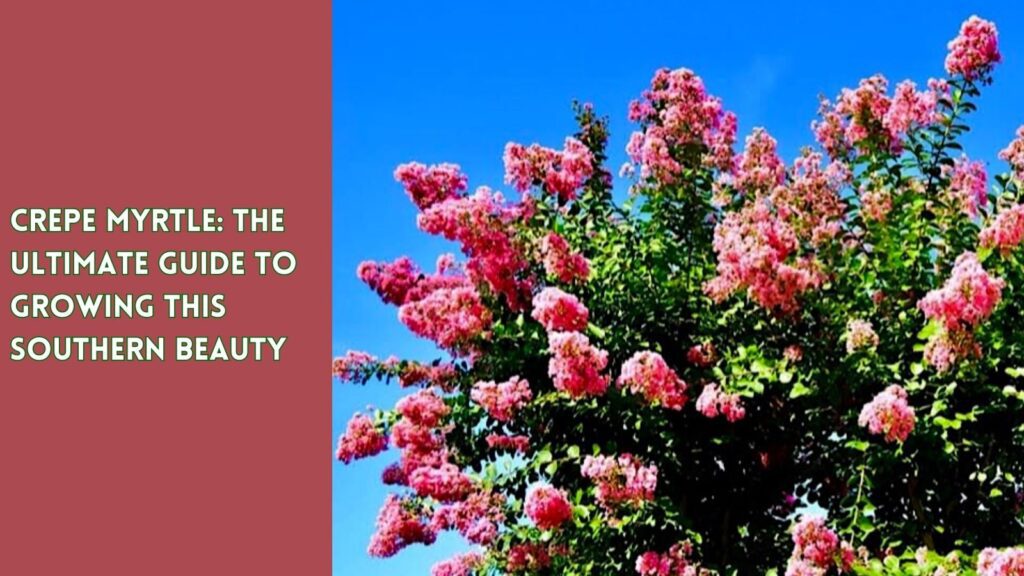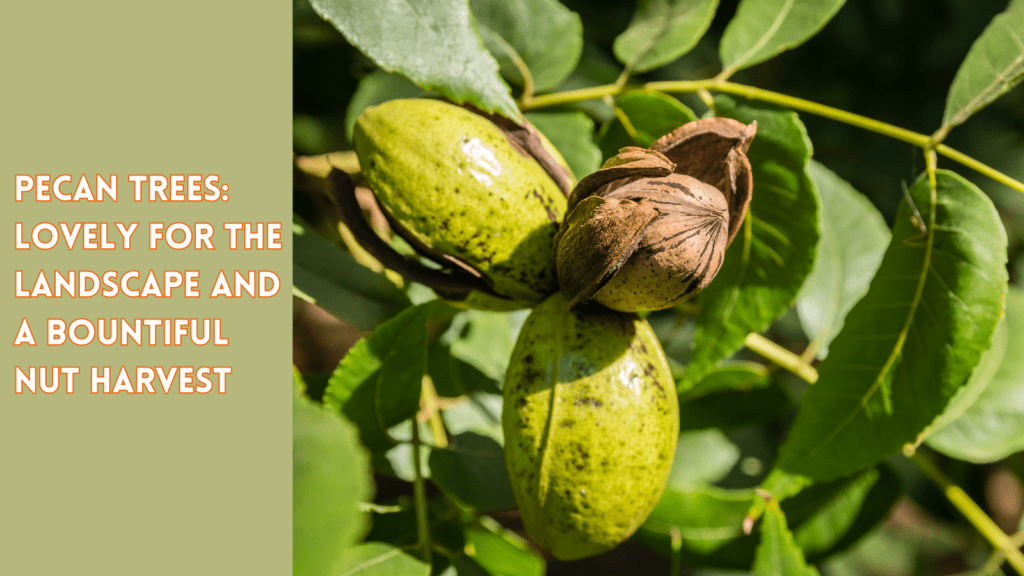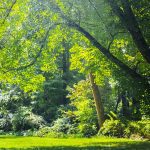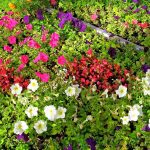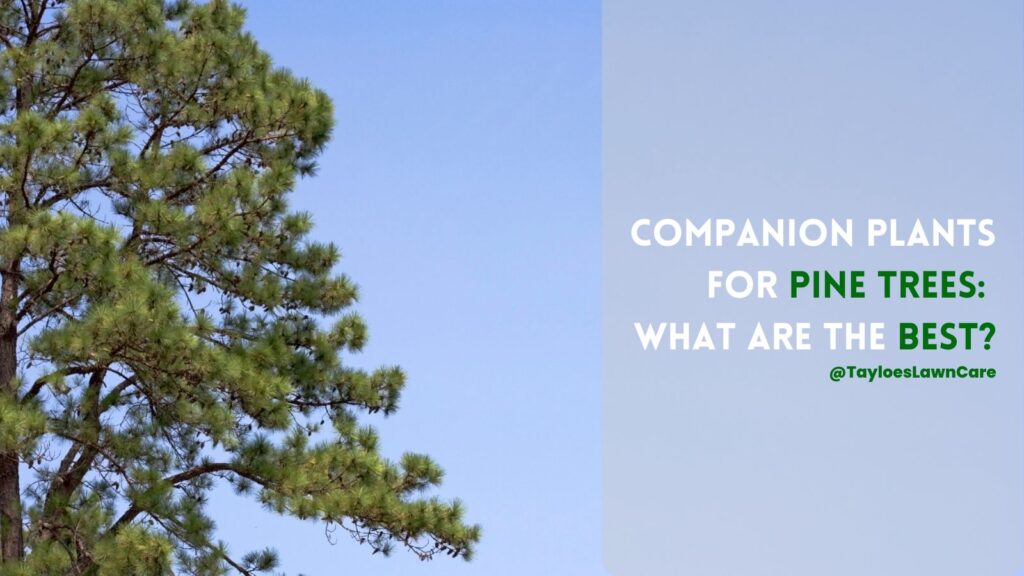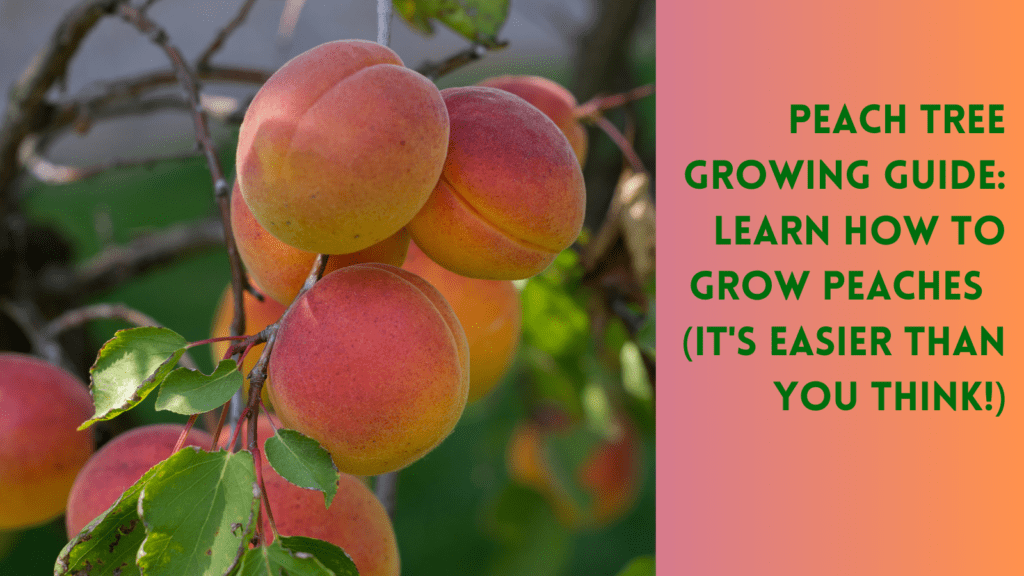Last Updated on: 23rd September 2024, 12:54 pm
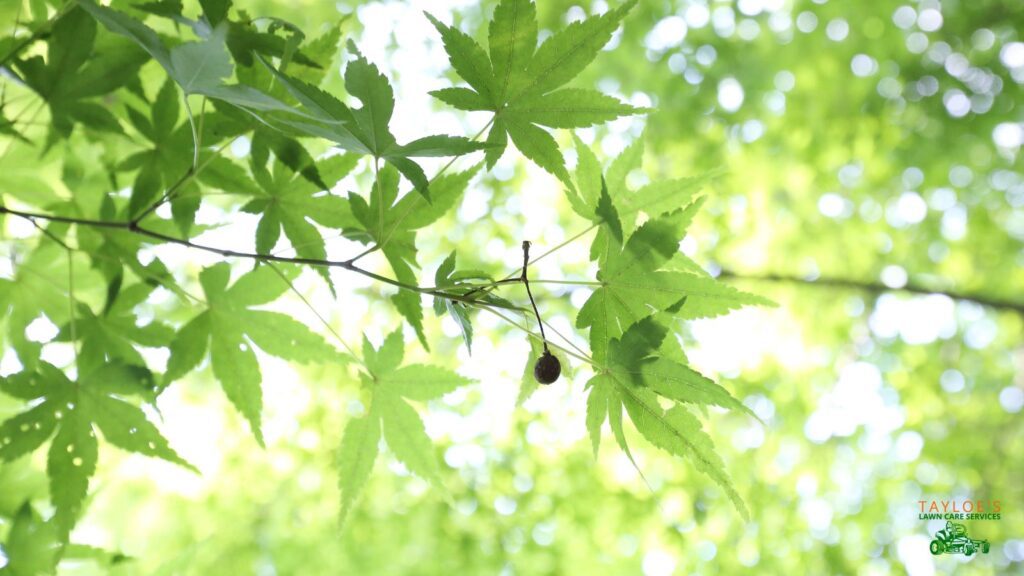
Need shade? Plant these.
Shade trees are nature’s air conditioners, especially in Northeastern NC where the summer sun doesn’t relent.
But nature’s fury can sometimes strip away these cooling giants, leaving your yard exposed. Facing a sun-drenched garden after a storm can feel like a real setback.
Are you a new homeowner or looking to revamp your landscape? Choosing the right shade tree is crucial.
You need trees that grow quickly, fit within the boundaries of your yard, and don’t demand constant upkeep.
With options suited for vast landscapes and smaller garden corners, our guide is designed to help you pick the perfect tree—and not just any perfect ones, but native trees that thrive in your local climate and soil, ensuring they grow strong and resilient.
These natives adapt better and support local wildlife, adding an ecological boost to your garden sanctuary.
Ready to find a tree that ticks all the boxes and brings back your leafy, serene outdoor space?
Let’s dive into our selection and make your yard a cooler, more inviting place.
Meet Your New Native Shade Trees: Ideal Choices for Your Yard
Here are the 17 excellent shade trees perfectly suited for the climate of Northeastern NC (Zones 7b/8a), each offering unique benefits and beauty to your yard:
1. Red Maple (Acer rubrum)
First up, the resilient Red Maple.
Fast-growing and striking, especially in the fall, this tree doesn’t just adapt; it thrives across varying soil types.
Picture its fiery red foliage lighting up your yard as the days shorten—pure wonder, right?
It loves moist, slightly acidic soil and will be happy with anything from full sun to partial shade. It is easy-going and gorgeous—what’s not to love?
2. Southern Magnolia (Magnolia grandifolia)
The Southern Magnolia brings the classic beauty of the South with its large, creamy white flowers and shiny evergreen leaves. This tree provides ample shade and aromatic blossoms that can fill your garden with a sweet scent.
It prefers moist, well-drained soil and full sun to partial shade, ensuring it blooms beautifully.
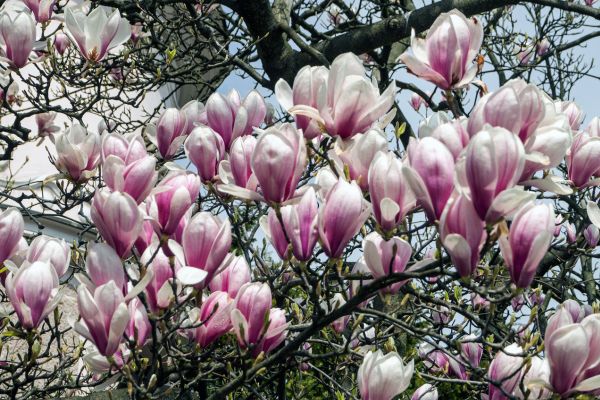
3. White Oak (Quercus alba)
If longevity is what you seek, the White Oak is your tree.
Known for its strong, broad growth and stunning fall color, it’s perfect for larger landscapes. This tree appreciates deep, well-drained, acidic to neutral soils and thrives in full sun to partial shade.
It’s a slow grower but provides enduring shade and structural beauty.
4. Bald Cypress (Taxodium distichum)
Don’t be fooled by its name; the Bald Cypress is a deciduous conifer that loses its needles in the winter, revealing a striking, fluted trunk.
It’s uniquely suited to wet areas, making it ideal for properties with poor drainage.
It prefers full sun and can grow in standing water, showcasing its adaptability and rugged beauty.
5. Tulip Poplar (Liriodendron tulipifera)
Now, if it’s drama you’re after, the Tulip Poplar won’t disappoint.
This giant springs up fast, casting a vast canopy of cooling shade. Come spring, its tulip-like flowers are a spectacle not to be missed.
It prefers rich, well-drained soil and a sunny spot to show off its best assets.
6. American Elm (Ulmus americana)
Think of the American Elm as the resilient overachiever.
With a classic shape that casts wide shade, it’s perfect for hot summer days. Disease-resistant varieties are available, making it a reliable choice.
It’s not picky, tolerating a range from dry to moist soils, as long as it gets full sun.
7. River Birch (Betula nigra)
The River Birch is known for its distinctive, peeling bark and ability to thrive in wet, swampy soils.
It’s an excellent choice for areas that other trees might find challenging.
It prefers acidic, moist conditions and full to partial sun, making it a versatile and attractive addition to any landscape.
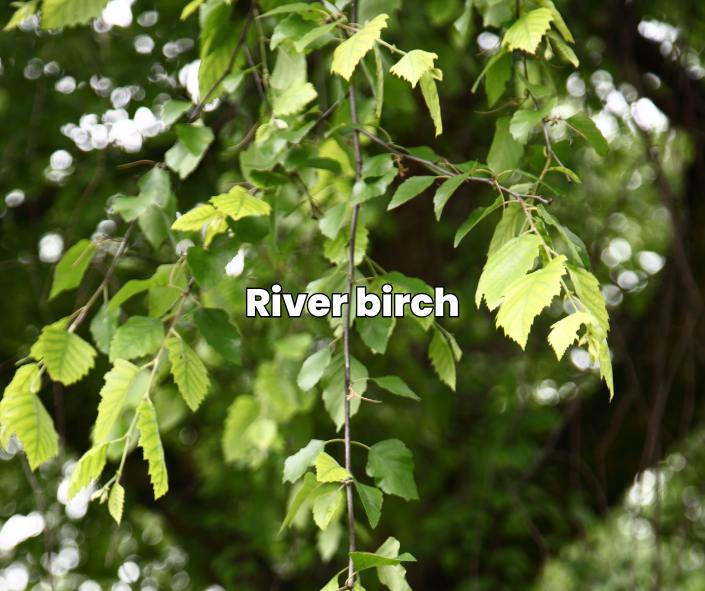
8. Sugar Maple (Acer saccharum)
The Sugar Maple is nature’s festive decoration.
Come autumn, its foliage turns a spectacular range of colors rivaling any holiday display.
It favors fertile, well-drained, slightly acidic soil. This iconic tree of the North thrives in full sun or partial shade.
9. Hackberry (Celtis occidentalis)
If you’re looking for durability and adaptability, Hackberry excels.
It handles urban pollution and a variety of soil types, including those that are dry and rocky.
Expect a medium to fast growth rate. The tree provides generous shade and small fruits that attract birds.
10. Black Gum (Nyssa sylvatica)
Ever seen a Black Gum in the fall? Its leaves turn vibrant shades of red and orange, a real show-stopper.
Plus, it’s a champ in wet areas, where other trees might struggle.
What does it prefer? Acidic, moist, well-drained soil, with full sun to partial shade to truly flourish.
11. Eastern Red Cedar (Juniperus virginiana)
Though not a traditional shade tree, the Eastern Red Cedar offers dense foliage and a robust, conical form that can act as a windbreak or privacy screen.
It thrives in hot, dry locations and poor soils, making it a hardy choice for challenging sites.
Full sun is ideal to promote dense growth and prevent fungal diseases.
12. Sweetgum (Liquidambar styraciflua)
Sweetgum is notable for its star-shaped leaves and stunning fall color, which varies from yellow to deep burgundy.
It grows quickly and forms a pyramid-like canopy.
The tree thrives in moist, acidic soils and does well in full sun to partial shade.
13. Willow Oak (Quercus phellos)
The Willow Oak features narrow, willow-like leaves and is known for its rapid growth and tolerance to different environments, including urban settings.
It prefers moist, well-drained soils and is great for providing quick, expansive shade.
14. American Hornbeam (Carpinus caroliniana)
Also known as Ironwood, the American Hornbeam is appreciated for its attractive, smooth gray bark and dense foliage.
It’s a smaller tree that excels in shady understories and prefers moist, well-drained soil, making it perfect for smaller landscapes or garden corners.
15. Crape Myrtle (Lagerstroemia)
Crape Myrtle, although not a native, is extensively used in southern landscaping for its long-lasting blooms that come in a variety of colors.
It loves full sun and well-drained soils and can tolerate drought once established, making it a versatile choice for adding both shade and color.
16. Dogwood (Cornus florida)
The Dogwood is beloved for its beautiful spring blooms and compact size.
Ideal for smaller yards, it offers year-round interest with flowers, berries, and fiery fall foliage.
It prefers slightly acidic, well-drained soil and partial shade, making it perfect under larger trees’ canopy.
17. Pecan (Carya illinoinensis)
The Pecan tree provides ample shade and the bonus of delicious nuts.
It’s a large tree that requires space to flourish and prefers deep, fertile, well-drained soil. Full sun is best for optimal nut production and growth.
Now, with the list at hand, let’s wrap up with some of the common questions around planting and maintaining these shade trees:
Growing & Caring for Shade Trees: FAQs
Now that you know the 17 perfect species for the growing conditions of northeaster NC, you might wonder how to grow them…
How deep should I dig the hole when planting a shade tree?
Dig a hole twice as wide as the root ball of the tree but only as deep as the root ball itself. This allows the roots to spread easily without sinking the tree too deep, which can cause rotting of the trunk.
How should I ensure my shade tree thrives in the first year?
Regular watering is crucial; ensure your tree gets at least 1-1.5 inches of water weekly, either through rainfall or manual watering.
Mulch around the tree base to help preserve moisture and regulate soil temperature.
Are there any specific mulches better for shade trees?
Organic mulches like wood chips, bark, or compost are best. They not only suppress weeds but also improve soil quality as they decompose.
Avoid too fine mulches, as they can compact and reduce oxygen flow to the roots.
How can I protect my young trees from wind and storm damage?
Staking young trees can provide stability until their root systems are fully developed.
Use soft ties and stakes placed a few inches away from the trunk, allowing some movement as this encourages stronger root growth.
When is the right time to prune my shade trees?
Prune during the dormant season, typically from late fall to early winter, to remove dead or diseased branches and to shape the tree.
Avoid heavy pruning in spring when the tree is starting to grow.
Can I plant shade trees close to my house?
It’s best to plant large shade trees at least 20 feet from your house to prevent any damage from roots or falling limbs in the future.
Consider the tree’s full-grown size when choosing a planting location.
What are some signs of disease or pest problems in shade trees?
Common signs include holes or chewed edges on leaves, discolored leaves, thinning canopy, and unusual growths like galls or cankers.
If you notice any of these symptoms, consult a local arborist or extension service for diagnosis and treatment options.
And that’s it: Your Quick Guide to Shade Trees in Northeastern NC
What are you waiting for? Go ahead and pick your favorite from this list, and transform your yard into a serene, shaded retreat today!
Need a hand with tree planting or other yard maintenance tasks? Tayloe’s Lawn Care Services, LLC can help those in Bertie or Hertford Counties. Let’s connect – 252.287.3376.
Author Profile

- Maureen Abuor
- Maureen Abuor is a professional content marketing strategist and SEO strategist, with particular knowlege of creating landscaping and gardening content that informs and delights her audience. When she's not working, she's a busy mother of three precious little ones and child of God.
Latest entries
 Lawn CareApril 29, 2025Best shady area grass seed for Eastern NC
Lawn CareApril 29, 2025Best shady area grass seed for Eastern NC GardeningApril 15, 2025How do I make organic soil for the garden?
GardeningApril 15, 2025How do I make organic soil for the garden? Flower GardenMarch 7, 2025What are wave petunias?
Flower GardenMarch 7, 2025What are wave petunias? Flower GardenMarch 3, 202520 Full-sun annuals for your spring and summer garden
Flower GardenMarch 3, 202520 Full-sun annuals for your spring and summer garden

